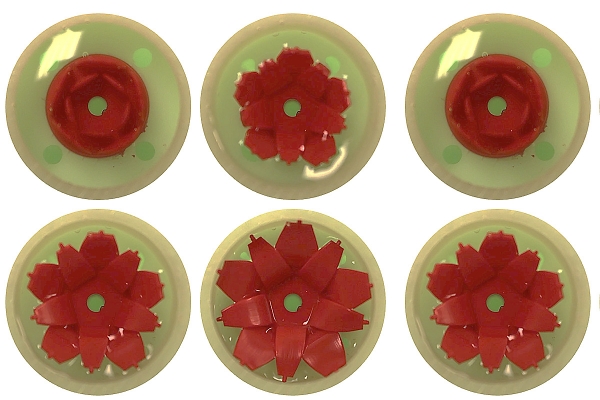Flexible displays that can change color, convey information and even send veiled messages via infrared radiation are now possible, thanks to new research from the University of Illinois Urbana-Champaign. Engineers inspired by the morphing skins of animals like chameleons and octopuses have developed capillary-controlled robotic flapping fins to create switchable optical and infrared light multipixel displays that are 1,000 times more energy efficient than light-emitting devices.
The new study led by mechanical science and engineering professor Sameh Tawfick demonstrates how bendable fins and fluids can simultaneously switch between straight or bent and hot and cold by controlling the volume and temperature of tiny fluid-filled pixels. Varying the volume of fluids within the pixels can change the directions in which the flaps flip – similar to old-fashioned flip clocks – and varying the temperature allows the pixels to communicate via infrared energy.
The study findings are published in the journal Science Advances.
Read more at University of Illinois Urbana-Champaign
Image: University of Illinois Urbana-Champaign engineers have developed a new breed of display screens that use flexible fins, varying temperatures and liquid droplets that can be arranged in various orientations to create images. The control is precise enough to achieve complex motions, like simulating the opening of a flower bloom. (Image courtesy Sameh Tawfick via University of Illinois Urbana-Champaign)


